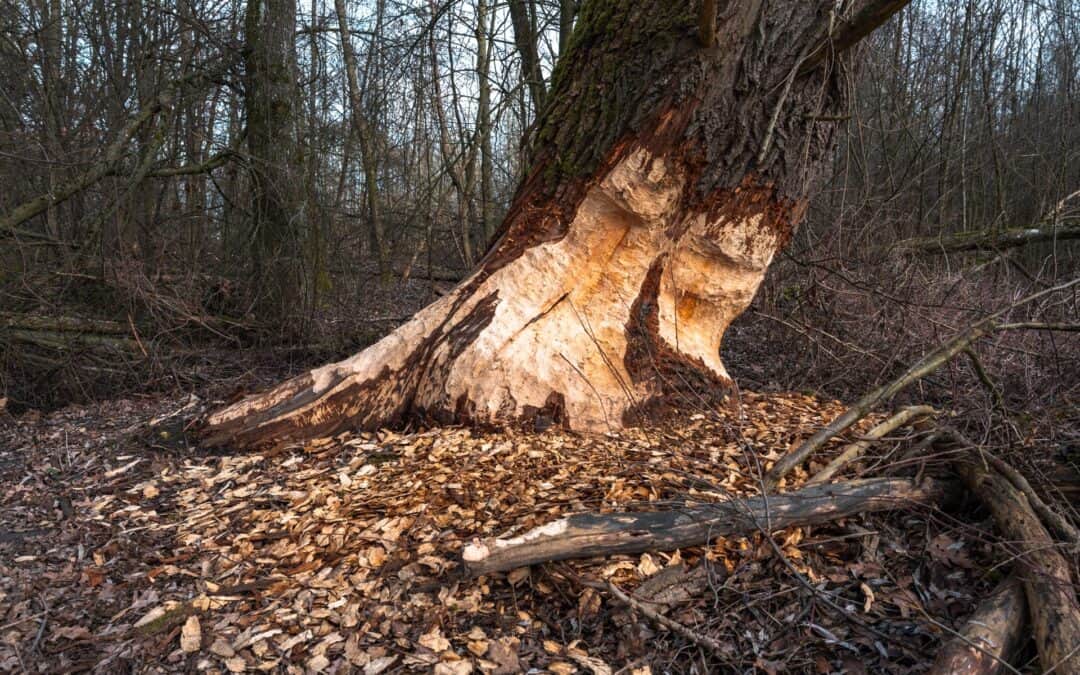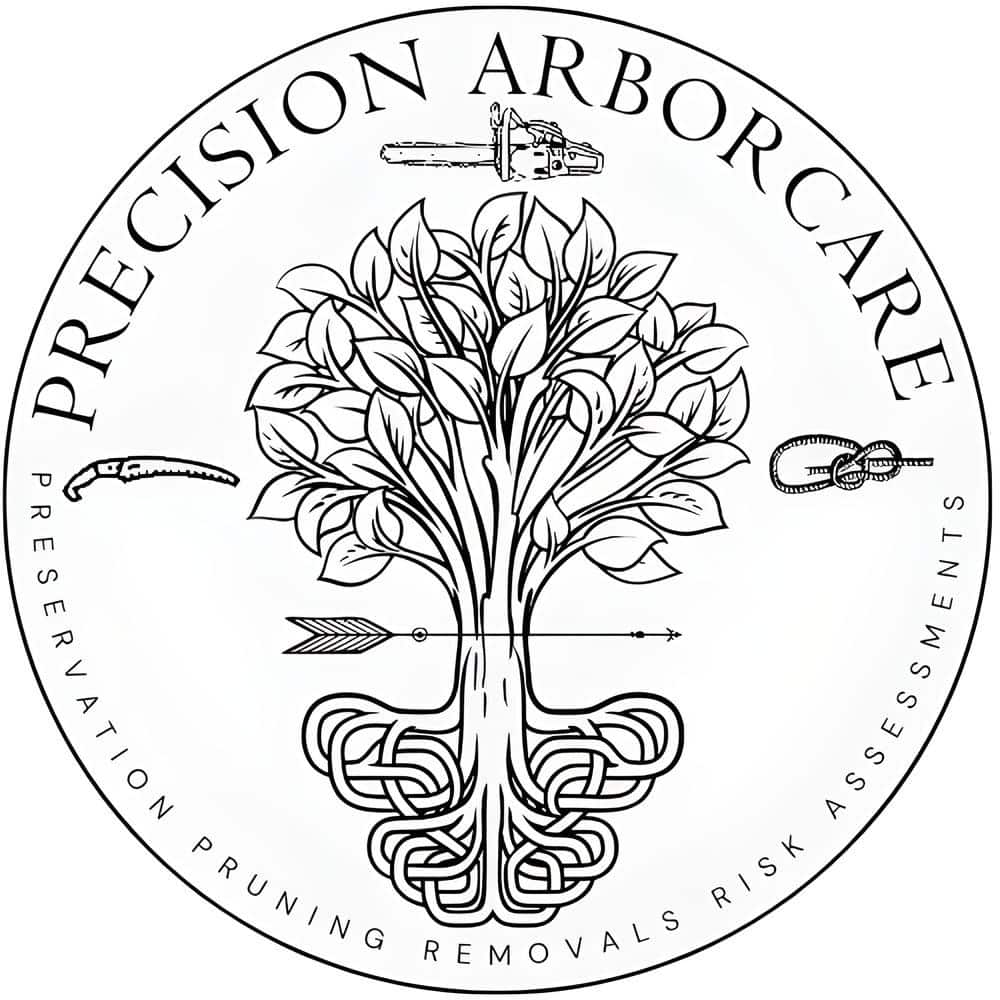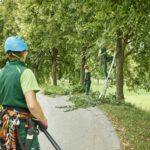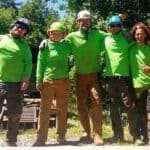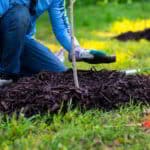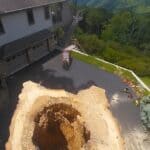Trees are incredibly resilient, but they are not immune to disease. Several types of diseases affect trees, some of which can be devastating if left unchecked. Arborists understand that tree diseases, when caught early, can often be treated or managed to prevent extensive damage. A keen eye and timely intervention can make all the difference in preserving a tree’s health and longevity. Understanding what diseases are common in trees around the Asheville region can help identify threats before they cause irreparable harm.
To underscore the ongoing challenges faced by Asheville’s forests due to invasive species and highlight the importance of continued conservation and management efforts, here is one examples. The invasive emerald ash borer has severely impacted white ash trees in the North Carolina mountains. Conservation efforts have led to the protection of over 800 ash trees along the Tennessee-North Carolina border, particularly in areas like the Pisgah and Cherokee National Forests. Despite these efforts, the emerald ash borer continues to pose a significant threat to ash tree populations in the region.
Knowing the types of tree diseases in a particular area helps in early detection and prevention. Many trees in the region are prone to fungal infections, root diseases, and bacterial pathogens that weaken them over time. This information allows professionals to act swiftly and efficiently.
Tree Diseases Arborists Commonly See
Experienced arborists often encounter a variety of diseases affecting trees, many of which are particularly aggressive in certain environmental conditions. A simple example involves oak trees, which can quickly succumb to oak wilt if the disease isn’t caught early. By the time symptoms become noticeable, the disease may have already spread to neighboring trees, making it difficult to control. Arborists use tools and knowledge acquired through years of experience to combat these diseases.
- Oak wilt, a fungal disease, often spreads through interconnected root systems, causing rapid defoliation.
- Dutch elm disease is another widespread problem that has devastated tree populations across the country, particularly elm trees.
- Root rot is common in areas with poor drainage, weakening trees from the ground up.
Fungal Diseases in Trees Around Asheville
Fungal diseases are some of the most common ailments affecting trees, especially in regions with high humidity. These diseases typically attack a tree’s leaves, bark, and root systems, impairing its ability to absorb water and nutrients. Arborists frequently deal with fungal pathogens that spread through spores, which can travel significant distances on wind, water, or even through insects.
Fungal diseases can be subtle at first, but they cause significant damage if untreated:
- Armillaria root rot, often called oak root fungus, targets a tree’s root system, making it vulnerable to toppling.
- Anthracnose is a leaf disease that causes dark lesions and defoliation in a variety of tree species.
- Powdery mildew is another common fungal infection, leaving a white, powdery substance on the leaves and stunting growth.
Identifying Root Rot in Trees
Root rot is a silent killer, often going unnoticed until it’s too late. Trees affected by root rot tend to exhibit reduced growth, yellowing leaves, and, eventually, the entire tree might topple over. This is because root rot decays the underground structure of the tree, weakening its foundation. Arborists often use moisture meters and soil sampling to assess the extent of the damage.
Root rot is caused by several factors, including:
- Poor drainage or overly wet soil conditions.
- Fungal infections like Phytophthora that spread rapidly through the soil.
- Damaged roots due to improper planting or nearby construction.
Spotting Leaf Spot Diseases
Leaf spot diseases are easy to identify but challenging to control if they become widespread. These diseases manifest as black, brown, or yellow spots on leaves, often causing them to fall prematurely. While leaf spots don’t typically kill trees, they weaken them and make them more susceptible to other diseases and pests.
Common leaf spot diseases include:
- Tar spot, which creates black spots on the leaves of maple trees.
- Septoria leaf spot, often found on fruit trees, causes irregular dark spots and can lead to premature leaf drop.
- Bacterial leaf scorch, a problem in urban settings, causes leaves to brown from the tips inward.
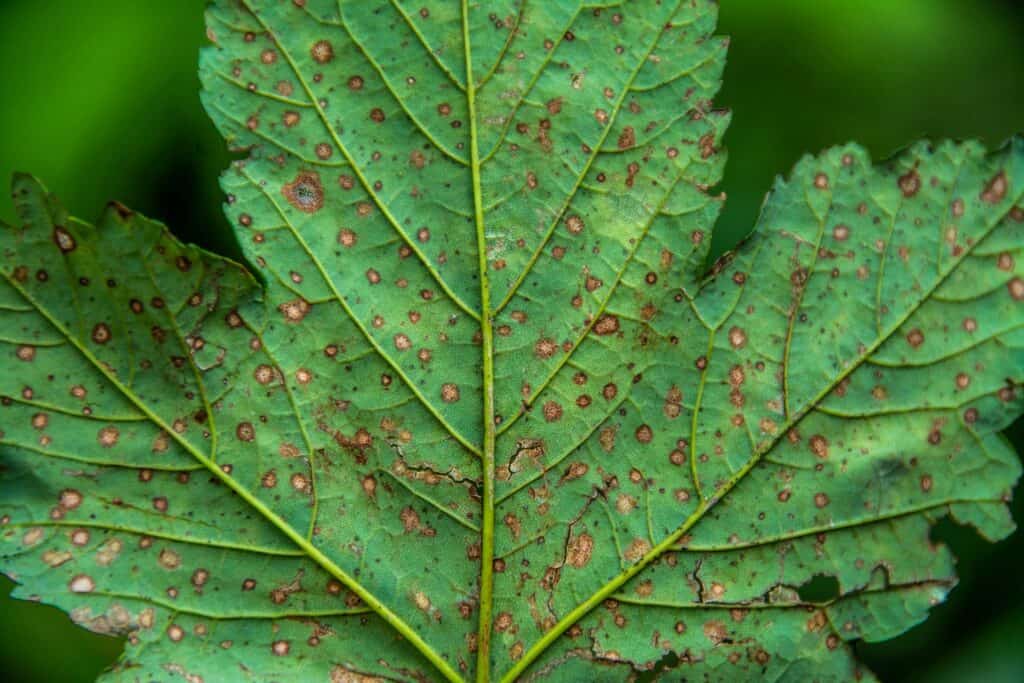
Understanding Canker Diseases in Asheville Trees
Canker diseases cause lesions on tree bark, eventually leading to dieback if untreated. Trees weakened by drought, poor nutrition, or pests are especially vulnerable. Canker diseases thrive when a tree’s defenses are down, allowing the pathogen to infect the bark and cambium layers, cutting off vital nutrients.
Canker diseases to watch for include:
- Cytospora canker, commonly affecting pine, spruce, and aspen trees.
- Chestnut blight, a historical canker disease that has wiped out much of the American chestnut population.
- Hypoxylon canker, which is often fatal to oak trees, especially those weakened by stress.
Bacterial Diseases Affecting Trees
Bacterial diseases, though less common than fungal infections, can be just as damaging to trees. These pathogens typically invade through wounds in the bark, either from pruning, storm damage, or insect activity. Arborists are always on the lookout for bacterial diseases, which can spread rapidly during warm, wet weather.
Common bacterial tree diseases include:
- Fire blight, primarily affecting fruit trees such as apple and pear.
- Bacterial leaf scorch, a chronic disease that affects many shade trees, including elm and oak.
- Crown gall, which causes abnormal growths on the roots, stems, or branches of infected trees.
The Importance of Arborists in Diagnosing Tree Diseases
Diagnosing tree diseases is both an art and a science, and arborists are skilled in identifying symptoms early. They use their expertise to provide appropriate treatments, which can range from removing infected branches to applying fungicides or other chemicals. Arborists also provide advice on tree care practices that promote long-term health and resilience.
Why an arborist’s expertise is invaluable:
- Their knowledge of local tree species and common diseases allows for faster diagnosis.
- They can recommend specific care routines, such as watering schedules or soil amendments.
- Arborists offer solutions to prevent diseases from spreading to other trees in the area.
Tree Diseases Affecting Fruit Trees
Fruit trees are particularly vulnerable to diseases, and these ailments often lead to reduced fruit production. Arborists help maintain the health of fruit trees, not only by treating diseases but also by advising on proper planting and pruning techniques to prevent issues from arising in the first place.
Common diseases in fruit trees include:
- Apple scab, a fungal disease that causes black lesions on apples and leaves.
- Peach leaf curl, which causes distorted leaves and can reduce fruit yield.
- Cedar-apple rust, a disease that affects both apple trees and nearby cedar trees.
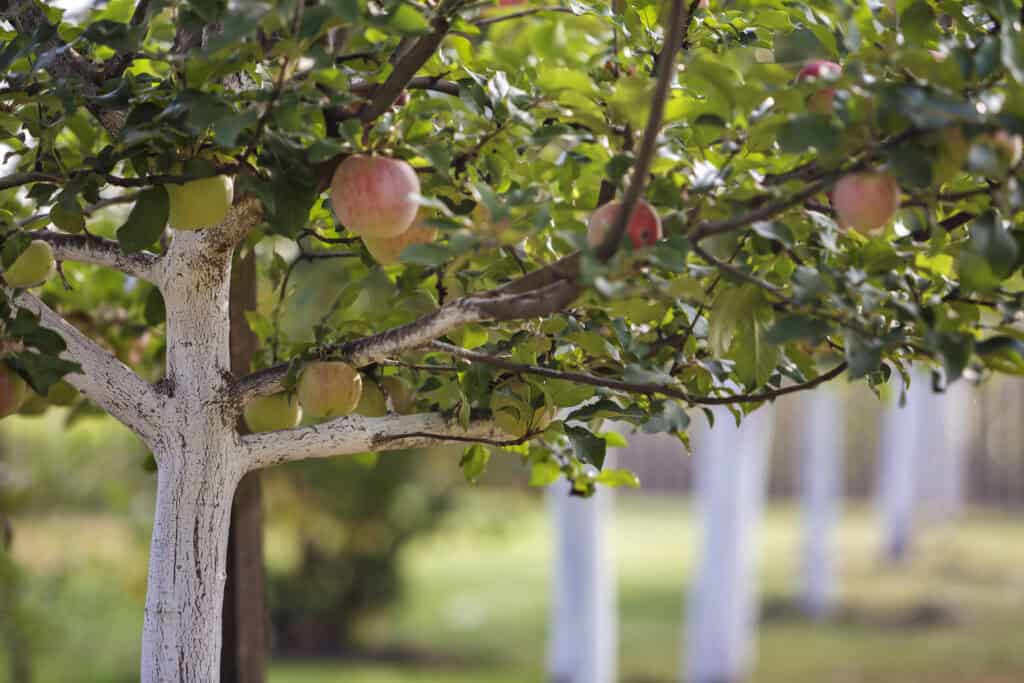
Preventing Tree Diseases with an Arborist’s Help
Preventing tree diseases is often more effective than trying to treat them after they’ve taken hold. Arborists provide guidance on tree maintenance, soil health, and proper watering to ensure trees remain strong and resilient. They also recommend regular inspections to catch early signs of disease before they spread.
Effective prevention strategies include:
- Regular pruning to remove dead or diseased branches.
- Ensuring proper spacing between trees to reduce the spread of disease.
- Applying mulch to maintain soil moisture and temperature balance.
Key Takeaways on Common Tree Diseases
- Arborists play a vital role in identifying and treating tree diseases early.
- Fungal infections, root rot, leaf spot diseases, and bacterial pathogens are common threats to tree health.
- Preventive care, regular inspections, and early intervention are crucial to maintaining tree health.
Frequently Asked Questions
What are the most common fungal diseases in trees?
Some of the most common fungal diseases include oak wilt, anthracnose, and armillaria root rot. These diseases typically attack the tree’s vascular system, roots, or leaves, leading to significant damage if untreated.
How can I tell if my tree has root rot?
Look for signs like stunted growth, yellowing leaves, and a lack of stability in the tree. If the tree seems to be leaning or if the soil around it is constantly wet, it may be suffering from root rot.
Can bacterial diseases be treated in trees?
While bacterial diseases can’t always be cured, they can be managed with proper pruning, sterilization of tools, and sometimes the application of bactericides. Arborists can recommend the best course of action based on the type of disease.
Is it necessary to hire an arborist for tree disease diagnosis?
Yes, an arborist is trained to accurately identify diseases and recommend appropriate treatments. Early diagnosis by an arborist can prevent the spread of disease to other trees and minimize long-term damage.
How do I prevent diseases in my fruit trees?
Regular pruning, proper spacing, and disease-resistant tree varieties are all effective ways to prevent disease. An arborist can also provide tailored advice for your specific fruit tree species.
Precision Arborcare is your trusted arborist for expert tree services in Asheville, NC. Built on a passion for trees and a commitment to providing top-quality arborist care, our company excels in technical skills while prioritizing clear communication, customer satisfaction, and safety. Our team consists of certified arborists and tree care professionals dedicated to enhancing and preserving the natural beauty of your landscape. We pride ourselves on being approachable, friendly, and professional arborists, ensuring that our clients feel confident and informed throughout every step of their tree care journey. Precision Arborcare offers tailored arborist services to meet the specific needs of each client, from routine maintenance and emergency tree services to specialized care for your trees.
